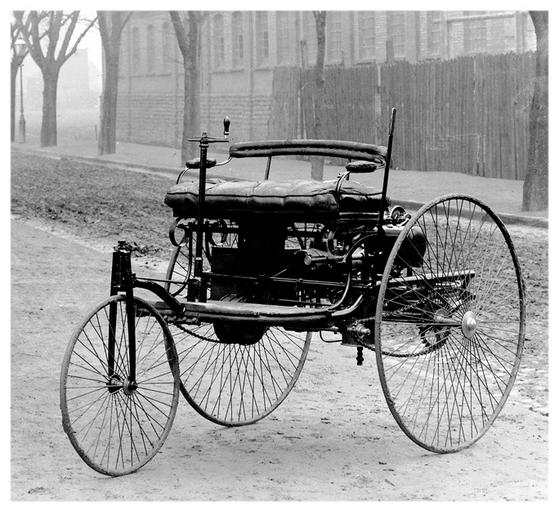MAKE A MEME
View Large Image

| View Original: | classic_historie_geschichte_1886_motorwagen.jpg (684x626) | |||
| Download: | Original | Medium | Small | Thumb |
| Courtesy of: | www.flickr.com | More Like This | ||
| Keywords: benz mercedes-benz mercedesbenz germany германия история автомобиля историяавтомобиля трицикл tricycle munich history of automobile historyofautomobile automobile blackandwhite monochrome bike vehicle black and white www.mercedes-benz.com/en/mercedes-benz/classic/history/co... How it all began 1886 Benz Patent Motor Car. The world’s first automobile The financial success of his gas engine factory secures Benz an economic basis, enabling him to devote himself to his vision of an engine-driven vehicle. But since his two-stroke engine is too large and too heavy to be installed in a vehicle, Benz puts all his efforts into the four-stroke principle. Just like Gottlieb Daimler and Wilhelm Maybach, he has to find a way to increase engine speed. And, just like the Cannstatt engineers, he focuses on ignition and valve control. Although his engine reaches a speed of “only” 400 rpm and is therefore less efficient than Daimler’s design, it already provides the necessary power to drive a “vehicle without horses”. Carl Benz demonstrates the full extent of his talents in developing the vehicle. Instead of installing his engine in an existing vehicle, he designs his motor car as an integrated independent construction. The primary assembly is the engine with a horizontal cylinder and large, horizontally mounted flywheel. Benz designs his innovative vehicle with three wheels because he is unhappy with the single-pivot steering used in carriages at the time. Testing begins in October 1885. On 29 January 1886, he takes a step of historical significance when he submits a patent application for his “vehicle with gas engine operation” to the Imperial Patent Office. The patent specification for DRP 37435 is recognised today as the “birth certificate” of the automobile and bears the name “Patent-Motorwagen” (“Patent Motor Car”) for the world’s first automobile. www.mercedes-benz.com/en/mercedes-benz/classic/history/co... How it all began 1886 Benz Patent Motor Car. The world’s first automobile The financial success of his gas engine factory secures Benz an economic basis, enabling him to devote himself to his vision of an engine-driven vehicle. But since his two-stroke engine is too large and too heavy to be installed in a vehicle, Benz puts all his efforts into the four-stroke principle. Just like Gottlieb Daimler and Wilhelm Maybach, he has to find a way to increase engine speed. And, just like the Cannstatt engineers, he focuses on ignition and valve control. Although his engine reaches a speed of “only” 400 rpm and is therefore less efficient than Daimler’s design, it already provides the necessary power to drive a “vehicle without horses”. Carl Benz demonstrates the full extent of his talents in developing the vehicle. Instead of installing his engine in an existing vehicle, he designs his motor car as an integrated independent construction. The primary assembly is the engine with a horizontal cylinder and large, horizontally mounted flywheel. Benz designs his innovative vehicle with three wheels because he is unhappy with the single-pivot steering used in carriages at the time. Testing begins in October 1885. On 29 January 1886, he takes a step of historical significance when he submits a patent application for his “vehicle with gas engine operation” to the Imperial Patent Office. The patent specification for DRP 37435 is recognised today as the “birth certificate” of the automobile and bears the name “Patent-Motorwagen” (“Patent Motor Car”) for the world’s first automobile. | ||||